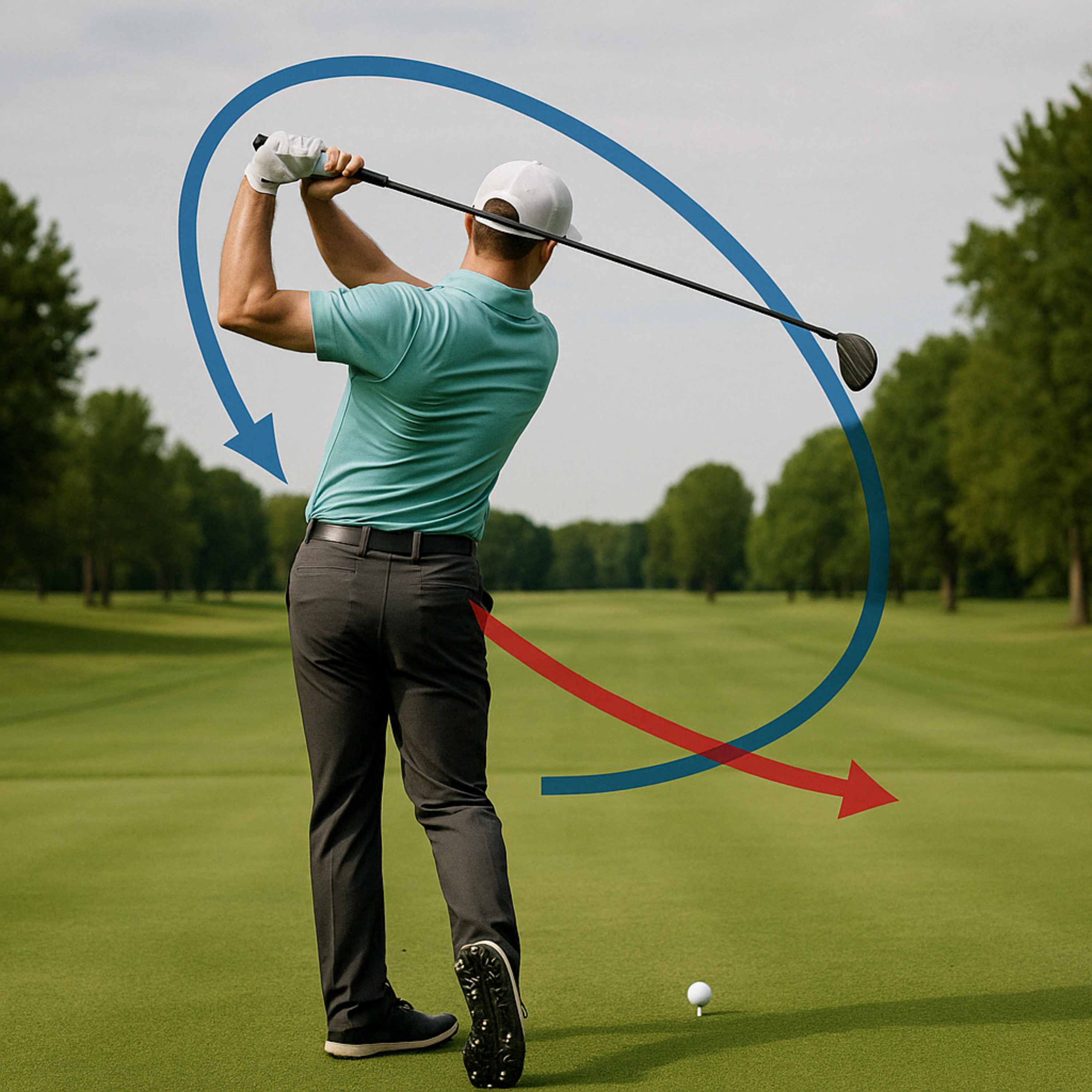#194 How to Truly Control Your Club Path
- Author
- Golf247.eu
- Published
- Tue 15 Apr 2025
- Episode Link
- https://podcasters.spotify.com/pod/show/puttin-pro/episodes/194-How-to-Truly-Control-Your-Club-Path-e31i6vm
If you want to consistently control your ball flight, you need to understand what influences your club path. Many golfers struggle with slices, hooks, or pushes—often without knowing why. In most cases, the problem lies in the path the club takes through the swing.
What many don’t realize is this: your club path is measurable. And that’s the key. When you analyze the key moments in your swing, you can make targeted changes instead of guessing.
The Takeaway – Where It All Begins
The moment you start moving the club back sets the tone for everything that follows.
One of the most important checkpoints is when the shaft is parallel to the ground.
At this point, the clubhead should be roughly in line with your hands. That alignment creates balance, control, and a neutral swing plane.
If the club is too far behind you or too flat at this stage, it often leads to an exaggerated in-to-out path and hook tendencies.
If it’s too steep or too far in front, pulls or slices become likely.
In short: how you start determines how well you finish. Your takeaway is the foundation of the swing.
The Top Position – Control or Chaos
At the top of your backswing, your swing either stays on track—or begins to fall apart.
If your club is “across the line” or “laid off,” your transition becomes a compensation move.
That often leads to steep, inconsistent downswings or overly shallow, timing-dependent motions.
A clean, neutral position at the top gives you the best chance to drop the club into the slot and start your downswing with power and control.
The more stable and compact your top position, the easier it becomes to repeat a consistent path.
The Downswing – Where It All Comes Together
The beginning of the downswing is one of the most underestimated moments in golf.
Some players “throw” the club from the top—resulting in a steep, over-the-top motion.
Others drop the club too far behind the body, creating a swing that’s too flat and dependent on timing.
The key is a natural shallowing of the shaft in relation to your shoulder plane—not too steep, not too flat.
You don’t get there by force. You get there with rhythm, rotation, and sequencing.
Swing Direction – Your Invisible Compass
Your swing direction ultimately determines where the ball starts—and which way it curves.
A slightly in-to-out swing path tends to produce draws or straight shots.
Too far in-to-out creates hooks. Too far out-to-in, and you’re slicing.
The solution isn’t to fix the ball flight—it’s to fix the direction the club is moving through impact.
Work on a neutral swing direction that fits your stance and alignment.
Once you know how your club is actually moving—not just how it feels—you’ll gain control over your game.
Conclusion: Real Control Comes from Understanding
Your club path isn’t a mystery—it’s the result of specific, measurable movements that can be tracked and refined.
When you see your swing clearly—through defined checkpoints and structured analysis—you become more consistent, more precise, and more confident.
This isn’t about being perfect. It’s about being repeatable and reliable.
That’s the difference between a good round—and good golf, round after round.
